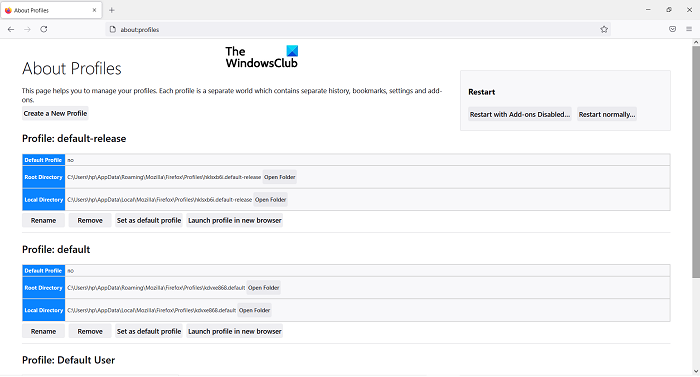

- #Firefox profile manager firefox 40 how to#
- #Firefox profile manager firefox 40 Patch#
- #Firefox profile manager firefox 40 software#
- #Firefox profile manager firefox 40 windows#
This could be useful if you have a backed up profile folder somewhere on your hard drive and want to tell Firefox to use that as your profile. It's possible to move the location of a profile folder. Move an existing profile or restore a backed up profile

#Firefox profile manager firefox 40 how to#
Just follow these steps (which assumes you know how to manage files on your computer): Backing up your profileīacking up your profile folder in Firefox is easy. Do this by checking the Don't ask at startup option. You can also have Firefox start a selected profile automatically, so you don't have to pick one each time the browser is launched. If you want to switch back to your old profile, just start the Profile Manager again (instructions above) and select the old profile. You are now running Firefox with the new profile, which means all settings are reset to default. You should now be taken back to the Profile Manager and the newly created profile should be listed.
#Firefox profile manager firefox 40 windows#
Normally C:\Documents and Settings\ \Application Data on Windows XP/2000,Ĭ:\users\ \AppData\Roaming on Windows Vista.

You will be taken to the "real" folder, which is The Application Data path on Windows 2000/XP/Vista. ~/Library/Application Support/Firefox/Profiles/ fault/
#Firefox profile manager firefox 40 Patch#
Looking at browsers, Chrome was the fastest and with 40 fixed bugs it had an average time to patch of 5.3 days. It also took an average 46 days to fix bugs compared to 44 days for Google, 69 days for Apple, and 83 days for Microsoft.
#Firefox profile manager firefox 40 software#
Mozilla patched nine of the 10 bugs affecting its software within 90 days of the initial report. While Firefox user numbers are declining, Mozilla performed fairly well in Google Project Zero's analysis of how quickly software vendors fixed bugs. Mozilla hasn't released further details, but credits the bug reports to researchers at Chinese security firm Qihoo 360 ATA, Wang Gang, Liu Jialei, Du Sihang, Huang Yi and Yang Kang. WebGPU is a browser specification for various interfaces that allow a web page to use a system's GPU for improved graphics. We have had reports of attacks in the wild abusing this flaw." "An unexpected message in the WebGPU IPC framework could lead to a use-after-free and exploitable sandbox escape.

We have had reports of attacks in the wild abusing this flaw," Mozilla explains. "Removing an XSLT parameter during processing could have led to an exploitable use-after-free. SEE: Cybersecurity: Let's get tactical (ZDNet special report) CVE-2022-26486 could also lead to an exploitable sandbox escape, according to Mozilla. Ukrainian developers share stories from the war zoneīoth CVE-2022-26485 and CVE-2022-26486 are critical use-after-free memory-related flaws. The best Wi-Fi router for your home office 3G shutdown is underway: Check your devices now


 0 kommentar(er)
0 kommentar(er)
